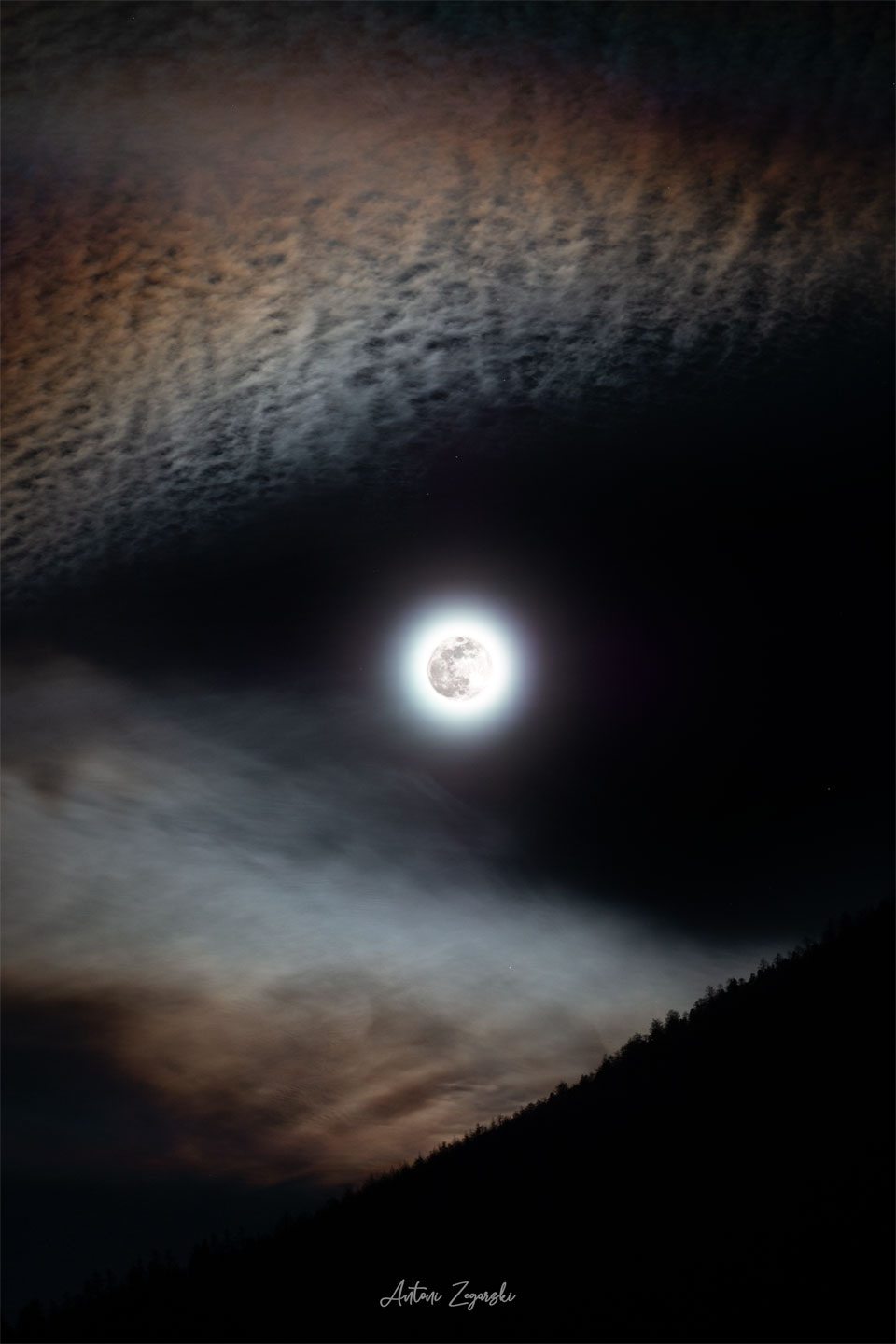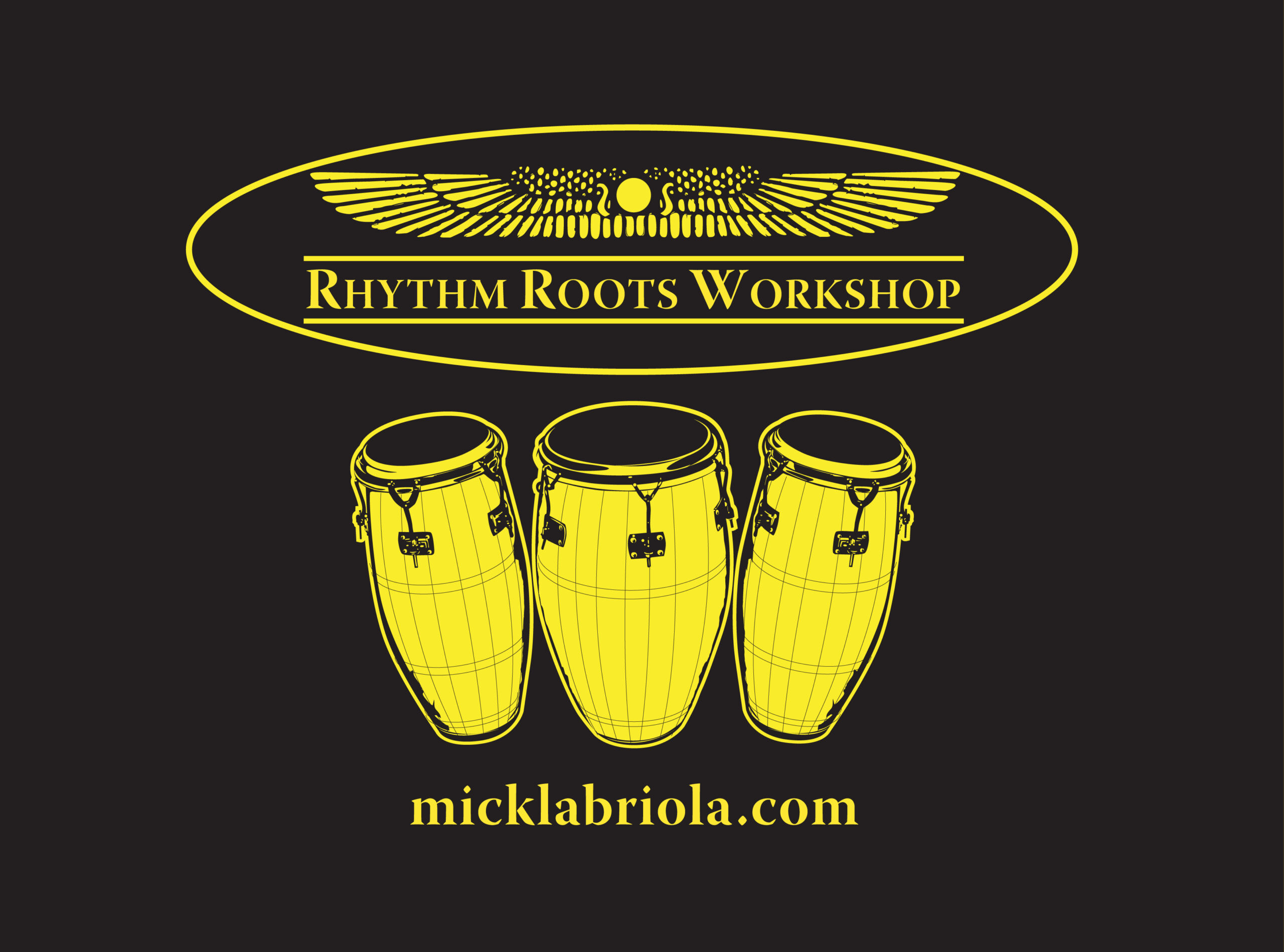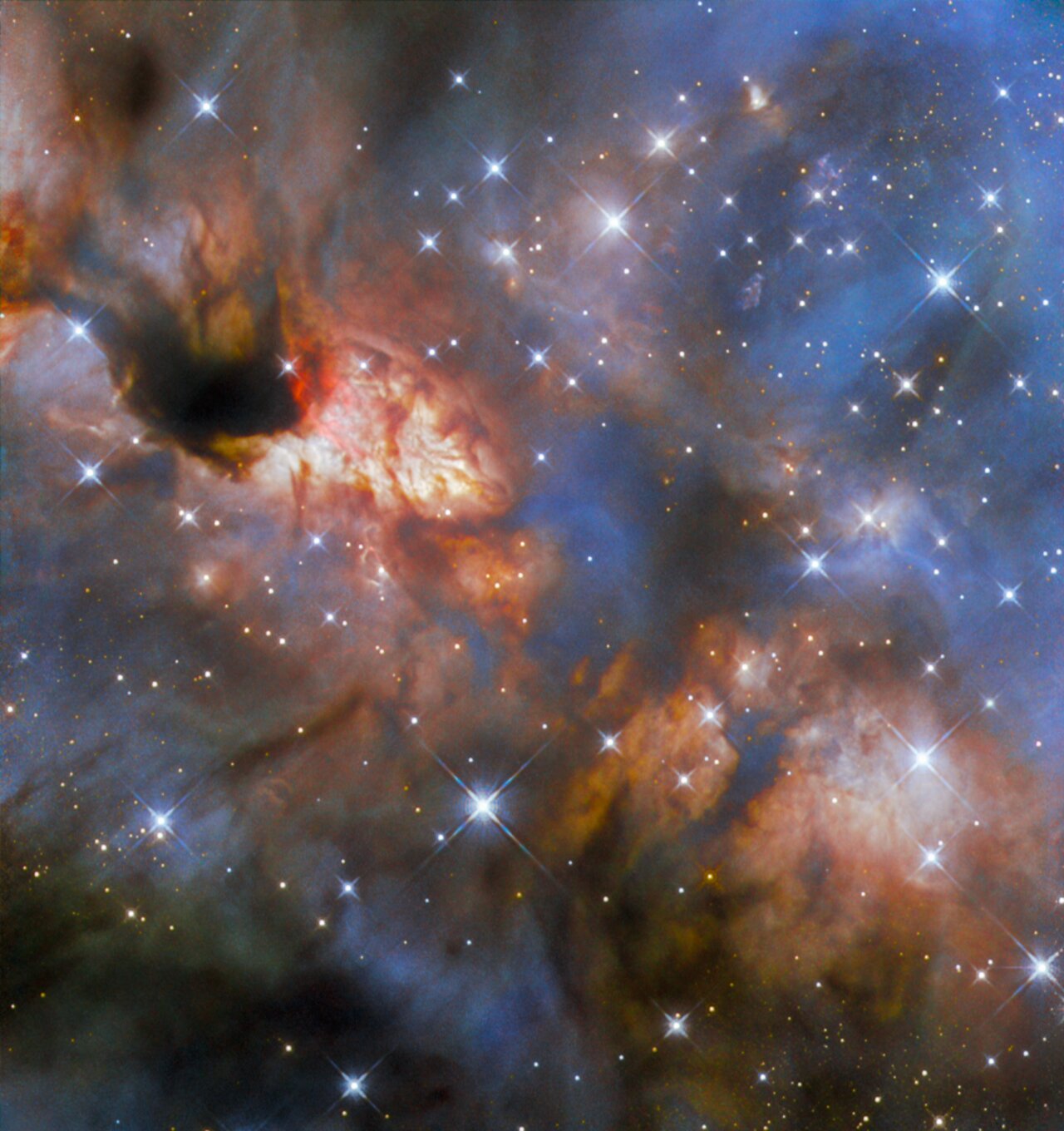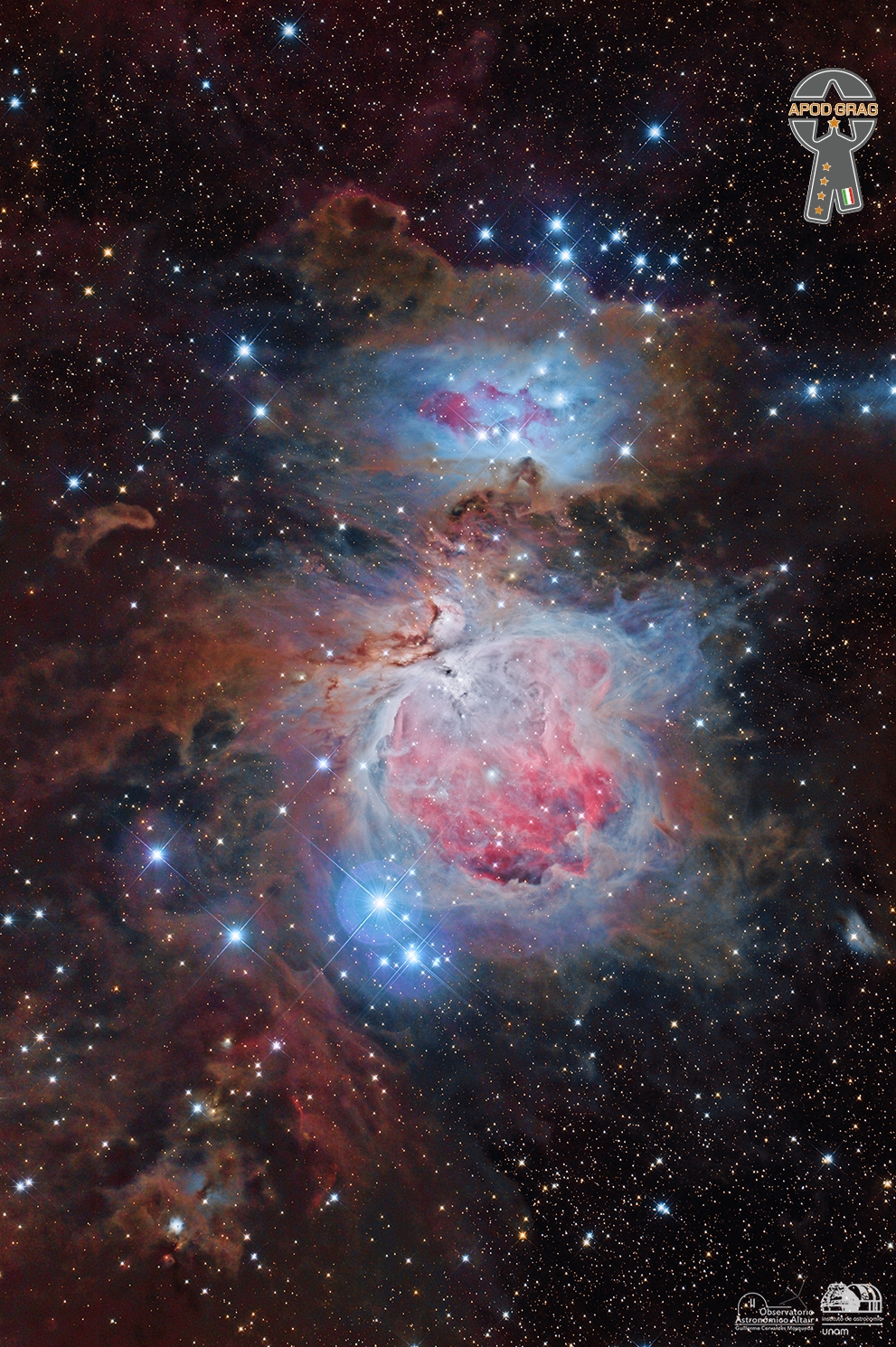Blog
During every month, on average, a full moon occurs in the skies over planet Earth. This is because the Moon takes a month to complete another orbit around our home planet, goes through all of its phases, and once again has its entire Earth-facing half lit by reflected sunlight. Many indigenous cultures give each full moon a name, and this past full moon’s names include the Ice Moon, the Stay at Home Moon, and the Quiet Moon. Occurring in January on the modern western calendar, several cultures have also named the most recent full moon the Wolf Moon, in honor of the famous howling animal. Featured here above the Italian Alps mountains, this past Wolf Moon was captured in combined long and short exposure images. The image is striking because, to some, the surrounding clouds appear as a wolf’s mouth ready to swallow the Wolf Moon, while others see the Moon as a wolf’s eye.

more...
Peter Brian Gabriel (born 13 February 1950) is an English singer-songwriter and musician. He rose to fame as the original lead singer of the progressive rock band Genesis. After leaving Genesis in 1975, he launched a successful solo career with “Solsbury Hill” as his first single. His fifth studio album, So (1986), is his best-selling release and is certified triple platinum in the UK and five times platinum in the US. The album’s most successful single, “Sledgehammer“, won a record nine MTV Awards at the 1987 MTV Video Music Awards and, according to a report in 2011, it was MTV‘s most played music video of all time.
Gabriel has been a champion of world music for much of his career. He co-founded the WOMAD festival in 1982. He has continued to focus on producing and promoting world music through his Real World Records label. He has pioneered digital distribution methods for music, co-founding OD2, one of the first online music download services. Gabriel has also been involved in numerous humanitarian efforts. In 1980, he released the anti-apartheid single “Biko“. He has participated in several human-rights benefit concerts, including Amnesty International‘s Human Rights Now! tour in 1988, and co-founded the Witnesshuman rights organisation in 1992. Gabriel developed The Elders with Richard Branson, which was launched by Nelson Mandela in 2007.
more...King Floyd (February 13, 1945 – March 6, 2006) was a New Orleans soul singer, best known for his top 10 hit from 1970, “Groove Me“.
King Floyd III was born in New Orleans in 1945. His musical career started as a singer at the Sho-Bar on Bourbon Street. Following a stint in the army, Floyd went to California, where he joined up with record producer Harold Battiste. His debut album, A Man in Love, featuring songs co-written with Dr. John, failed to make an impact on the charts. Floyd returned to New Orleans in 1969 and worked for the Post Office.
more...Wardell Gray (February 13, 1921 – May 25, 1955) was an American jazz tenor saxophonist who straddled the swing and bebop periods.
The youngest of four children, Gray was born in Oklahoma City. He spent his early childhood years in Oklahoma before he and his family moved to Detroit in 1929. Gray was still working regularly despite his drug problems, and when Benny Carter was engaged in May 1955 to provide the band at the opening of the Moulin Rouge Hotel, he called on Gray. Gray attended rehearsals but was absent when the club opened on May 25. The next day he was found on a stretch of desert on the outskirts of Las Vegas dead with a broken neck. At the age of 34, he died of a heroin overdose.
more...Only one more day until Mardi Gras Day 2024
more...Teaching a Rhythm Roots Residency at Saint Therese Woodbury starting Monday February 12th 2024 2-330pm for nine weeks. Teaching cultural rhythms to the Senior community for healing and memory care.

If the Hubble Picture of the Week from two weeks ago was somewhat dim and subtle in appearance, then this week’s image is a veritable riot of colour and activity! It features a relatively close-by star-forming region known as IRAS 16562-3959 that lies within the Milky Way in the constellation Scorpius, about 5900 light-years from Earth.
This image was compiled using observations from Hubble’s Wide Field Camera 3 (WFC 3). The detailed nuances of colour are possible because of the four separate filters that were used to collect the data. Filters are thin slivers of highly specialised material that only allow very specific wavelengths of light through. They can be slid in front of the part of the telescope that is sensitive to light, letting astronomers control which wavelengths of light the telescope collects with each observation. This is useful not only for specific scientific research, but also for the creation of images like this one.
Raw telescope observations are always monochrome, regardless of which filter was used. However, specially trained artists and image specialists can select colours that match the wavelength range covered by individual filters. Or, in the case where a direct match is not possible — such as for the data used in this image, which are all in the infrared regime, which human eyes are not sensitive to — the artist can select a colour that sensibly represents what is taking place. For example, they might assign bluer colours to shorter wavelengths and redder colours to longer wavelengths, as is the case in the visible light range. Then, data from multiple filters can be combined to build up a multi-colour image, that both looks beautiful and has scientific meaning.
At the centre of the image, IRAS 16562-3959 is thought to host a massive star — about 30 times the mass of our Sun — that is still in the process of forming. At the near-infrared wavelengths to which Hubble is sensitive, the central region appears dark because there is so much obscuring dust in the way. However near-infrared light leaks out mainly on two sides — upper left and lower right — where a powerful jet from the massive protostar has cleared away the dust. Multi-wavelength images including this incredible Hubble scene will help us gain a better understanding of how the most massive, brightest stars in our galaxy are born.
[Image Description: A nebula with stars. The centre of the image from top-left to bottom-right glows brightly with light from where new stars are being formed, and is partially covered by dark dust. Coloured layers of gas and dust billow out across the rest of the image. The nebula is speckled with foreground stars with large diffraction spikes.]

Omar Hakim (born February 12, 1959) is an American drummer, producer, arranger and composer. His session work covers jazz, jazz fusion, and pop music. He has worked with Weather Report, David Bowie, Foo Fighters, Chic, Sting, Madonna, Dire Straits, Bryan Ferry, Journey, Kate Bush, George Benson, Miles Davis, Daft Punk, Mariah Carey, The Pussycat Dolls, David Lee Roth, and Celine Dion.
Hakim was born in New York City on February 12, 1959. His father, Hasaan Hakim, was a trombonist. Omar started playing the drums at the age of five, and first performed in his father’s band four or five years later.
more...William Otis Laswell (born February 12, 1955 Salem, Ill) is an American bass guitarist, record producer, and record label owner. He has been involved in thousands of recordings with many collaborators from all over the world. His music draws from funk, world music, jazz, dub, and ambient styles.
According to music critic Chris Brazier, “Laswell’s pet concept is ‘collision music’ which involves bringing together musicians from wildly divergent but complementary spheres and seeing what comes out.”Although his bands may be credited under the same name and often feature the same roster of musicians, the styles and themes explored on different albums can vary dramatically. Material began as a noisy dance music band, but later albums concentrated on hip hop, jazz, or spoken word readings by William S. Burroughs. Most versions of the band Praxis have included guitarist Buckethead, but they have explored different permutations on albums.
more...The Orion Nebula (also known as Messier 42, M42, or NGC 1976) is a diffuse nebula situated in the Milky Way, being south of Orion’s Belt in the constellation of Orion, and is known as the middle “star” in the “sword” of Orion. It is one of the brightest nebulae and is visible to the naked eye in the night sky with apparent magnitude 4.0. It is 1,344 ± 20 light-years (412.1 ± 6.1 pc) away and is the closest region of massive star formation to Earth. The M42 nebula is estimated to be 24 light-years across (so its apparent size from Earth is approximately 1 degree). It has a mass of about 2,000 times that of the Sun. Older texts frequently refer to the Orion Nebula as the Great Nebula in Orion or the Great Orion Nebula.

Didier Lockwood (11 February 1956 – 18 February 2018) was a French violinist. He played in the French rock band Magma in the 1970s, and was known for his use of electric amplification and his experimentation with different sounds on the electric violin.
In 1979, Lockwood released his first album as a leader, New World, and recorded more than 20 albums. In 1994, he moved to New York City for two years. During that time he recorded two albums, New York Rendez Vous and Storyboard. Lockwood’s influences include violinist Jean-Luc Ponty. He started playing electric violin after hearing Ponty on the album King Kong: Jean-Luc Ponty Plays the Music of Frank Zappa. Another important influence was Frenchman Stéphane Grappelli. In 2000, Lockwood recorded a tribute album to Grappelli.
more...Little Johnny Taylor (born Johnny Lamont Merrett; February 11, 1943 – May 17, 2002) was an American blues and soul singer. He made recordings throughout the 1960s and 1970s, and continued public performances through the 1980s and 1990s.
Born in Gregory, Arkansas, United States, he is frequently confused with his contemporary and near namesake Johnnie Taylor, especially since the latter made a cover version of the song that Little Johnny Taylor was most famous for, “Part Time Love” (1963), and the fact that both men began their careers as gospel singers.
more...Sérgio Santos Mendes (Brazilian Portuguese; born February 11, 1941) is a Brazilian musician. His career took off with worldwide hits by his band Brasil ’66. He has over 55 releases and plays bossa nova heavily crossed with jazz and funk. He was nominated for an Oscar for Best Original Song in 2012 as co-writer of the song “Real in Rio” from the animated film Rio.
Mendes, a Brazilian musician, is primarily known in the United States, where his albums were recorded and where most of his touring took place.
Mendes is married to Gracinha Leporace, who has performed with him since the early 1970s. Mendes has collaborated with many artists through the years, including the Black Eyed Peas, with whom he re-recorded in 2006 a version of his breakthrough hit “Mas que Nada“.
more...More Posts
- Ben Harper Day
- Richard Bona Day
- Glen Moore Day
- World Music with Maisey Rika
- Daily Roots with Horace and Patrick Andy
- The Cosmos with NGC 6888
- Amir Perelman Day
- Phillip Catherine Day
- Henry Townsend Day
- World Music with Kodjovi Kush and Afrospot All Stars
- Daily Roots with Macka B
- Shabbat for the Soul at Mt Zion Temple
- The Cosmos with IC59/63
- Bootsy Collins Day
- Eddie Henderson Day
- Detroit Junior Day
- World Music with Manolo Franco
- Daily Roots with Jah Melodie
- Voices of Sepharad with Laurie Wohl Concert at the 11th Abrahamic Traditions Dinner
- The Cosmos with NGC 7000



